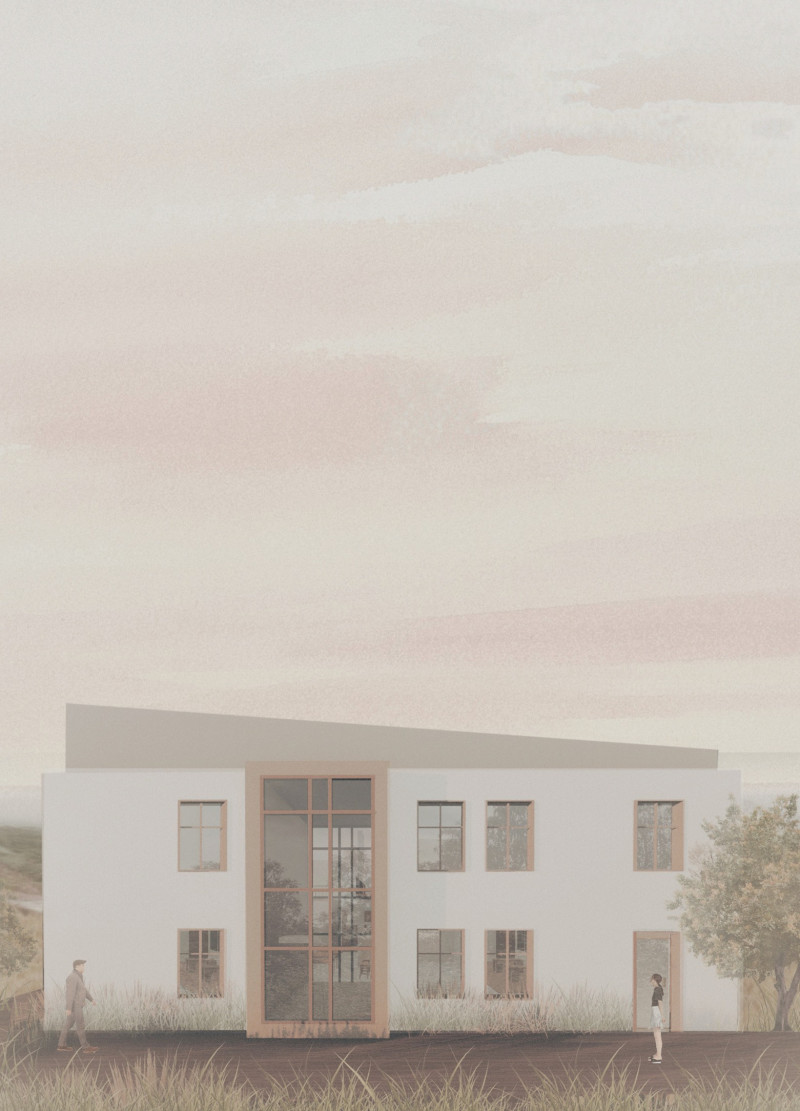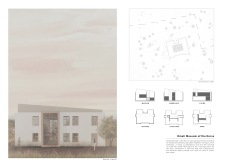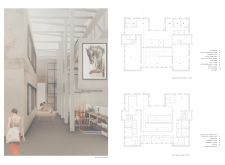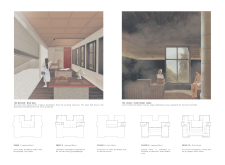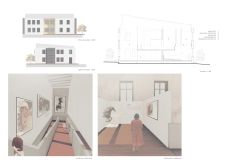5 key facts about this project
The Omuli Museum of the Horse integrates a museum, artist workshops, and living spaces into a cohesive design. Located in a setting that honors the cultural significance of horses, it aims to serve as a community hub for artistic expression and engagement. The concept emphasizes accessibility and interaction, creating an environment that supports both visitors and resident artists.
Spatial Organization
The ground floor includes essential areas such as a reception space, main exhibition hall, kitchen hall, multifunction area, and utility rooms. This layout is designed for easy movement, allowing visitors to transition smoothly between different spaces. The arrangement encourages visitor engagement with the exhibits while fostering interaction with the surrounding environment.
Community and Cultural Engagement
A key feature of the museum is the living accommodations for artists, which support a more immersive creative process. These living quarters are situated close to the exhibition spaces, providing an environment conducive to artistic production. A traditional sauna is also part of the design, reflecting local customs and offering a unique communal space, particularly during winter months.
Phased Development
The development of the museum follows a phased approach to ensure flexibility and sustainability. The first phase creates vital workshop and living spaces. The second phase expands accommodations for artists and includes a groundskeeper's area. In the final phase, the museum enhances common areas, allowing it to adapt to the growing needs of the community. This incremental strategy helps the project remain relevant and responsive.
Architectural Context
The design respects the surrounding environment while aiming for a balance in scale and proportion. The building form and volume are carefully considered to integrate with the local landscape. Architectural choices reflect a commitment to creating spaces that are both easy to navigate and pleasant to experience, establishing a meaningful connection to the regional cultural and historical context.
The museum features a main hall that honors the existing structure and showcases permanent exhibitions created by artists. Visitors find a space for connection and reflection, inviting them to engage with the cultural narrative surrounding the horse.


